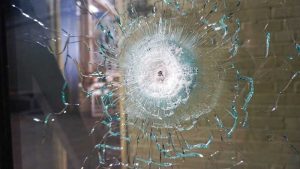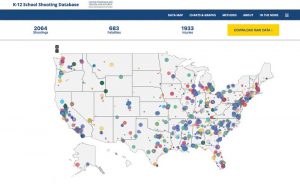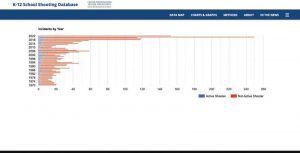Understanding their role in active shooter attacks
By Marc Donahue, EFCO

Parents, school officials, teachers, staff, and facility managers are increasingly asking architects and specification professionals whether their buildings are taking all the precautions available to mitigate shooting incidents. While no building product component or system is truly “bulletproof,” industry resources are evolving to evaluate, select, and specify high-performance, aluminum-framed curtain wall, storefront, entrance, and window systems which can help protect against active shooter attacks in schools, universities, and other facilities.
Based on real-life data and analytics, the Shooter Attack Test Method describes one rigorous ballistic and impact test regimen for whole product assemblies.
School shootings statistics
The K-12 School Shooting Database1 project is researched and maintained as part of the Advanced Thinking in Homeland Security (HSx) program at the Naval Postgraduate School’s Center for Homeland Defense and Security (CHDS). The database documents when a gun is brandished, fired, or a bullet hits school property for any reason, regardless of the number of victims, time of day, or day of the week. A subset of school shootings, a “school active shooter attack” refers to when one or more individuals are actively engaged in killing or attempting to kill people in a confined, populated area.

The CHDS data currently lists over 2000 total school shooting incidents from 1970 to present. More than 160 of these incidents meet the definition of a school active shooter attack.

The National Safety Security Protection Association (NSSPA) is a nonprofit organization focused on K-12 schools. Its all-volunteer membership includes subject matter experts in active shooter attacks, physical security, counter terrorism, building codes, architecture, education, psychology, engineering, and security technology. NSSPA2 analyzed data from 1985 to 2019 data, using CHDS and Education Week’s School Shooting Tracker.3 According to the data, on average, a school shooting occurred every eight school days, lasted eight minutes (without hostages), during which, someone was shot every 60 seconds. These events typically involved only one shooter with a preplanned attack. Further, additional research observed how 25 percent of active shooter attacks in educational settings involved two to five shots fired.




